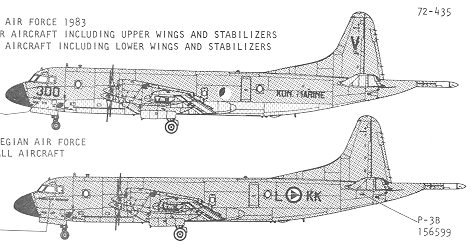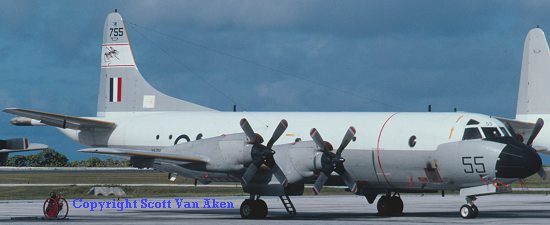

|
Sheet: |
Superscale 72-435 for P-3 Orion |
| Units: | See Review |
|
Price |
This sheet is at least 15 years old and not available |
|
Reviewer: |


 One doesn't see
many 1/72 P-3 kits built. The main reason is lack of 'cool' and the other is
that it is a large, expensive model. It takes up a huge amount of shelf space
and needs a TON of nose weight to keep from tail sitting. That weight makes the
nose gear rather prone to stress breaks. I've trashed my P-3 kit so many times
that I'm just about to toss it!
One doesn't see
many 1/72 P-3 kits built. The main reason is lack of 'cool' and the other is
that it is a large, expensive model. It takes up a huge amount of shelf space
and needs a TON of nose weight to keep from tail sitting. That weight makes the
nose gear rather prone to stress breaks. I've trashed my P-3 kit so many times
that I'm just about to toss it!
This particular sheet is for foreign P-3s. The Orion has had a really good foreign sales experience and since the US Navy disestablished so many P-3 squadrons after Desert Storm, there are tons of planes available for resale. I seriously doubt if we'll see a replacement for this aircraft for at least a decade or more. It will end up like the KC-135 and fly on forever! Face it, submarines are not much of a threat any more and battle groups can rely on helos if they need ASW protection.
Anyway, I've had the privileged of actually being around most of the actual aircraft depicted on this sheet so have pictures to go along with two of them. Microscale/Superscale made a few goofs and I'll point them out as needed.

The first plane on the sheet is the Dutch P-3 from 320 Squadron. This is the first one delivered. The instructions would have you paint it FS 36118 upper and 36622 on the underside. Don't. The actual colors are Extra Dark Sea Grey upper and Sky lower surfaces. They are not matte but quite glossy, as you can see from the picture above.
Second is the Norwegian AF P-3. It also is listed as FS 36118 overall. Again, it is Extra Dark Sea Grey and though it started out glossy as with the Dutch planes, often they did fade to a shade close to FS 36118 and became semi-matte. My photos are of later planes without the codes so I've not included a picture.

The final aircraft on the sheet is from 10 Squadron, Royal Australian Air Force. They are painted in white over Light Gull Grey (FS 16440) just like US P-3s. Again the colors are glossy. You can see from the photo above, that there are several shades of 16440 depending on who did the painting (look at the engines) so there is no need to get very pedantic about colors.
If you would like your product reviewed fairly and quickly by a site that has nearly 200,000 visitors a month, please contact me or see other details in the Note to Contributors.